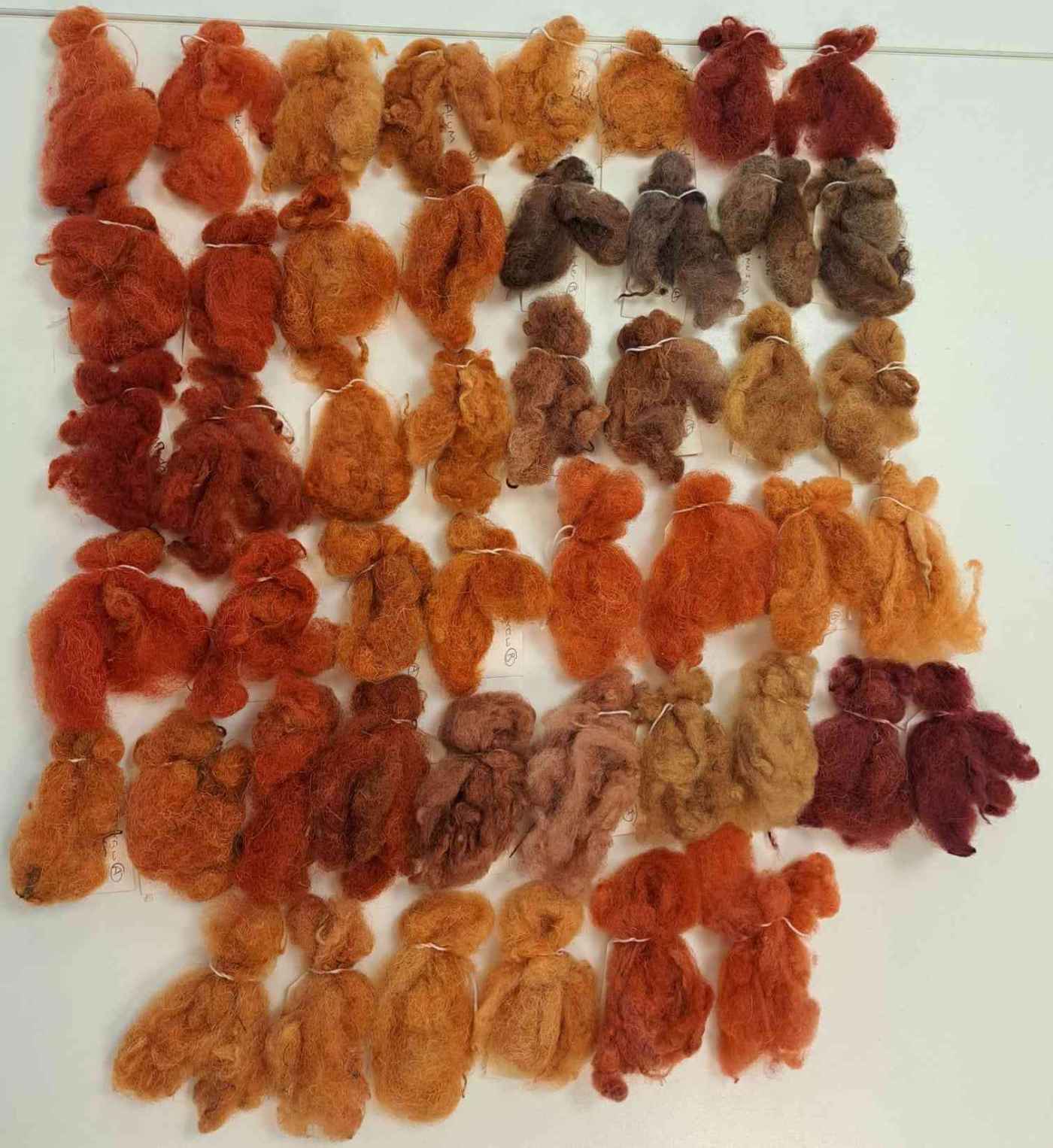PhD student Isobel Harvey wins dissertation award from the Society for Medieval Archaeology
Published: 7 July 2025
An experiment comparing the red dyes derived from the roots of two plants (dyer's madder and lady's bedstraw)
We are delighted to hear that Isobel (Issy) Harvey, one of our PhD students, has been awarded this year’s postgraduate dissertation prize from the Society for Medieval Archaeology as part of her MA in Material Culture and Experimental Archaeology at the University of York. Issy explains the work she undertook as part of her dissertation:
"My dissertation was an experiment comparing the red dyes derived from the roots of two plants (dyer's madder and lady's bedstraw) through various recipes, considering the contexts in which we have evidence for both of these dyes in early medieval England, and considering the social importance of the colour red in that period.
For the dyes themselves, I was comparing different recipes with combinations of the specific plant root, tannins (oak galls), alum (clubmoss), lye (woodash, although originally this was often fermented urine), iron acetate and copper acetate (probably leeched out of metal vessels when the dye was stewing), and looking both at the colour produced (both subjectively and through recording RGB value with a colourimeter) and the lightfastness of these dyes by leaving them in sunlight for two weeks then re-recording them and comparing the before and after values/photos.
There is only one extant piece of textile confirmed to be dyed with lady's bedstraw (although in non-specialist literature it is always the most commonly suggested alternative to madder), and this was from a C7th headdress, so I was also able to explore dress as a social construct, and Christianisation (red having connotations with the blood of Christ for example). This was from a grave in a small settlement in the Yorkshire Wolds, so a very different social context to somewhere like Jorvik/York, where at Coppergate there is a wealth of evidence for dyes including a huge amount of dyers madder.
The importance of Jorvik as a trade centre was also significant, as in the early medieval period it is not clear if madder was being imported rather than cultivated in Britain (it is non-native) whereas bedstraw is native and abundant on alkaline soils. I also looked at language; the Old English "RED" is often translated as an umbrella term covering everything from orange to purple.
The image below shows all the colours I produced by trying different dye recipes; I like to use this as a cover image as it shows the range of colours that were possible just by switching the mordant/assist (extra ingredients) and ties in with this umbrella theme”.

First published: 7 July 2025
<< Latest news

